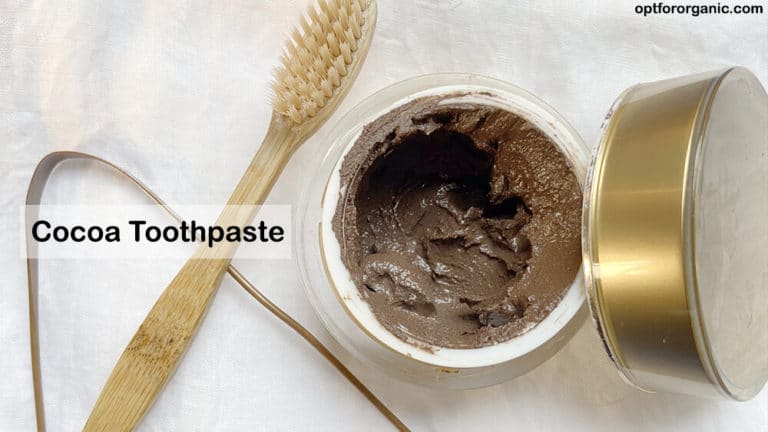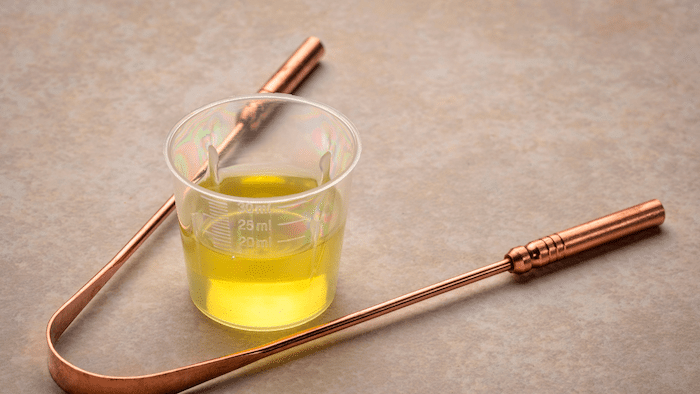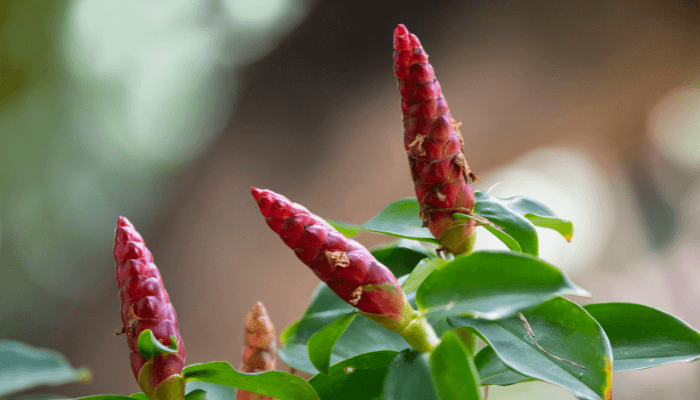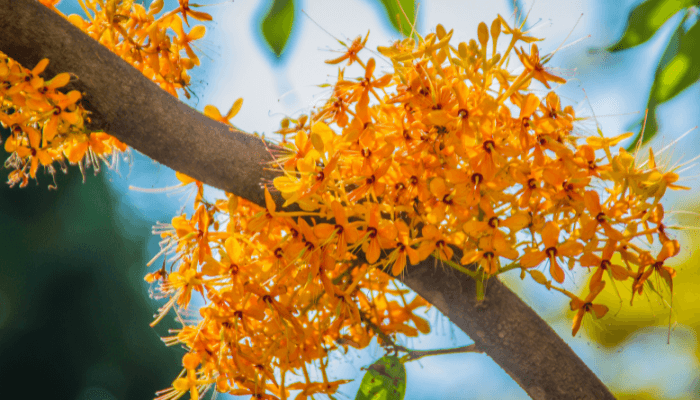Amra Fruits or Hog Plums – Everything You Wanted To Know About Them
Content Index
What are hog plums or Amra fruits?
Hog plums or Amra fruits are scientifically called Spondias mombin or yellow mombin. This wild fruit grows on a flowering tree that belongs to the Anacardiaceae or the cashew family.
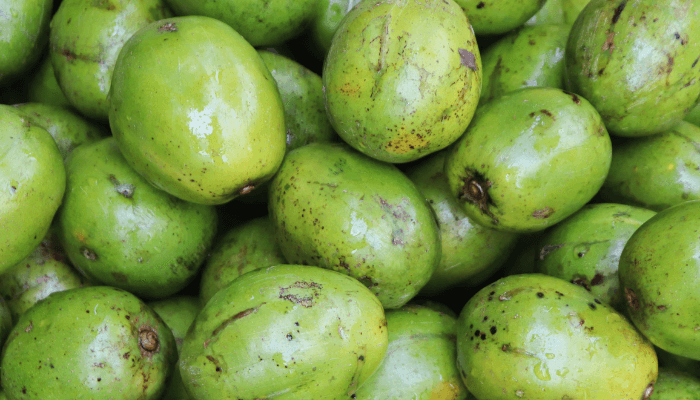
The tree is deciduous and grows 49 to 72 feet tall. It loses most of the leaves before blooming flowers. The small, new leaves can be eaten and all parts of the tree, like its bark, leaves, flowers and fruit are used for different purposes.
Its bark is strong, greyish, rough and has deep grooves in it while its beautiful white, mildly scented flowers bloom from January to May.
Hog plums look like avocados or normal plums that we eat however they are different. They have an orange-yellow flesh or pulp that is extremely juicy and is even used to quench thirst as they have good quantities of water and natural electrolytes that keeps the body hydrated.
The fruit gives off a mild, sweet fragrance when fully ripe. They appear yellowish-green and have a wrinkled exterior. The fruits are about 1.6 inches long and have a large stone-like seed inside that is spiny and cumbersome to separate from its pulp. You can see hog plums hanging on the trees from July to September.
Where are hog plums found?
They are endemic to tropical Americas; Peru, Brazil, Venezuela, Bolivia, Colombia, the three Guianas, as well as southern Mexico and the West Indies.
Hog plum now grows naturally in Africa, India, Nepal, Sri Lanka, Bangladesh, Indonesia, Bahamas, and Caribbean islands. It is cultivated in northeast Brazil for its plum-like fruits which are relished in these regions.
They were discovered by the Spanish and Portuguese settlers who had come to the Americas. Then the hog plums were brought to South Asia by the Portuguese in the early 17th century.
Since then, it has been extensively used in traditional medicine, as a savouring agent and also has a plethora of other health benefits since it is rich in antioxidants.
What does Hog Plums taste like?
Some people feel that hog plums are similar to crab apples but they are edible, however not many would like to bite into them straight from the tree. This is due to their acidic and sharp, sweet-sour taste which might not suit most people’s taste buds.
Culinary uses of hog plums
The taste may differ according to how ripe the fruit is. In many regions around the world, Hog plums are used in numerous ways. For instance, in Guatemala, they are used for making a popular wine called Vinho de Taperiba.
In Mexico, these are consumed as pickles and also eaten with salt and red chillies. They are also used to make tangy tarts that are a favourite of the locals.
In Thailand, this fruit is known as makok and is used in som tam which is a fresh Thai salad. It is also used to make jams, jellies and even ice-creams.
In India, the hog plum is known by various names such as Amra in West Bengal, ambazhanga in Kerala, amtekai in Kannada or ambade in Tulu. It is used extensively especially in the southern and western parts of the country for making spicy dishes, chutneys, pickles and curries.
It does not have an overpowering taste like tamarind so it is used as a souring agent in numerous south Indian vegetarian delicacies and also in most prawn dishes. It is also pickled and eaten with food since it has amazing digestive properties as well.
It is commonly used in Gujarati pickles, for adding that spicy tangy and sour taste to the Mangalorean cuisine especially curries, Goan sasavs and the vegetarian cuisine of the Gaud Saraswat Brahmin community.
In South America, its pulp is consumed fresh or used in various sweet dishes or made into healthy juices. Its fruit is also cooked and the unripe ones are pickled like olives. The small, juicy leaves are eaten as a vegetable and its shoots are consumed raw or can be boiled and taste like cassava. Also, hog plum trees store large amounts of water in their roots, so when drinking water is not available, the roots can be dug for freshwater.
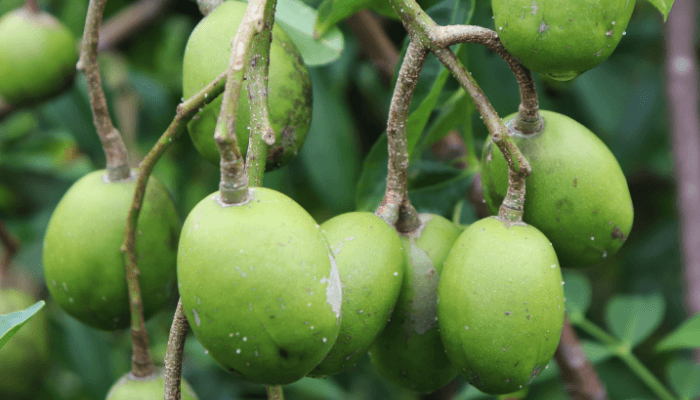
Health Benefits of Hog Plums
The hog plum is a popular fruit that is especially consumed due to its medicinal properties. It is found in tropical regions and comes in many colours such as green, yellowish-orange, etc.
It contains vital nutrients, vitamins and minerals that increase our immunity as well. Some of the health benefits of hog plums include the following:
Makes bones strong
Hog plums is a magical fruit that is free from sodium, fats, excessive sugar, and helps to control cholesterol. It is a great source of vitamin k that makes bones strong and improves bone health.
Vitamin k aids in clotting blood when you are injured and also makes bones strong so that they do not get fractured easily. It prevents pain in joints such as knee and shoulder joints and also prevents back pain. Amra fruit is mainly consumed to treat osteoporosis though its effectiveness in treating this condition has not been proven medically.
Also, recent research has shown that amra fruit has copper that keeps the connective tissues in good health and is also vital for absorption and assimilation of vitamin C by the human body.
Enhances muscle strength
Hog plum is also rich in a vitamin called Thiamine that performs vital functions in the body such as controlling muscle contraction and transferring nerve signals to and from the brain to other organs. The lack of this essential vitamin can cause the muscles to become weak and also lead to slow reflexes. So, if you have a deficiency of thiamine, then consuming lots of Amra or hog plums can help you to overcome this condition.
Best for digestion and gut health
Hog plums comprise sufficient quantities of dietary fibre that keeps the gut healthy and happy. It flushes out all the toxins from the body and improves digestive health as well. If someone has dietary problems such as acidity or frequent bloating, indigestion or even constipation, then consuming hog plums can help to get relief from all digestive issues.
Improves haemoglobin level in the body
Hog plums have plenty of iron that improves haemoglobin and myoglobin levels and aid in the circulation of oxygen in the body. Iron is a crucial micronutrient and its deficiency can cause tiredness, lack of concentration and feeling dizzy, lazy and sleepy. Amra is great as it helps to treat anaemia and other conditions.
Works as a Diuretic and Febrifuge
Hog plum juice is consumed as it helps to treat many health issues. Hog plums have diuretic properties and efficiently remove harmful and toxic fluids from the body and keep the kidneys healthy. The toxins are washed away in the urine and this also decreases salt or sodium content from the body that helps to maintain blood pressure as well.
Hog plums have been used as a natural medicine in many communities for treating fever and also malaria. It works as a febrifuge and can be used instead of allopathic medicines to reduce fever. It has qualities like flavonoids, anthraquinones, sesquiterpenes, quinoline and does not have side effects, unlike other medications.
Aids in losing weight
If you want to lose weight, then consuming hog plums would be the best option. They are rich in fibre, vitamins and minerals. A 100-gram amra contains about 28 calories. It also improves metabolism.
Rich in vitamin A and C; keep eyes and skin healthy
Hog plums have vitamin C that helps to prevent skin breakouts, acne, darkening and open pores. It keeps skin tight by boosting collagen production and delays ageing of the skin. It keeps skin healthy and glowing. It gets you beautiful shiny hair and healthy nails. So, hog plums can be eaten to keep skin healthy and radiant for a long time.
They are rich in Vitamin A and good for treating cataracts and other eye diseases. Consumption of Amra ensures that you have a clear and sharp vision.
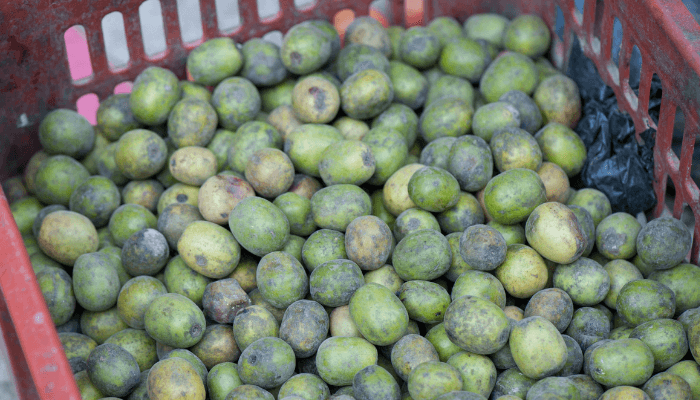
Prevents Cardiovascular diseases
Research has established that consuming hog plums can prevent any heart problems and significantly lower the risk of heart strokes and blockages. Hog plums have antioxidants that help to maintain and even lower cholesterol levels in the body. They are also rich in calcium and are highly beneficial for the heart.
Helps to treat Dysentery and leucorrhoea
The bark and leaves of the hog plum tree have flavonoids, saponins and tannins that can help to deal with dysentery and sore throat and also common cold and cough.
Many communities in the Americas use the bark to make herbal medicine from hog plums to cure dysentery. Approximately 6 grams of bark should be taken and cleaned properly. Then, it should be cut into pieces and boiled in 2 to 3 cups of water. After boiling it for 10 minutes it should be strained. This lukewarm concoction should be consumed to cure dysentery.
Hog plums are also used as a refrigerant and the potion made from boiling its leaves helps to cure leucorrhoea. The raw hog plums are used to treat rheumatism.
Medicinal benefits
Amra is a very important fruit in Ayurveda and has been used for ages for treating lower back pain, angina, sore throat, malaria, diarrhoea, urethritis, gonorrhoea, cold and cough, tuberculosis, laryngitis, leprosy, haemorrhoids, ophthalmia, stomach pain, intestinal ulcers, to expel tapeworms from the body etc.
Its bark is also used to treat external wounds and injuries and treat vaginal infections including menstrual pain. It is used as a natural vaginal wash as it has antibacterial properties. It is traditionally used to treat uterine and ovarian cancers and is also used as a contraceptive in South America. It is used after childbirth to bring about lactation and also aids in childbirth.
The bark is also used to flush out kidney stones from the body. It is used to treat skin rashes, skin lesions, psoriasis, dermatitis, leishmaniasis, insect bites, yeast, bacterial and fungal infections. It is also used for treating herpes and eye infections. Its leaves are also used for treating nervous disorders. Its juice is taken as a heart tonic to strengthen the heart muscles and to prevent heart palpitations.
In South America, a syrup made from Amra is used to treat chronic diarrhoea. A decoction made from boiling the bark is given to infants to keep their stomachs healthy and to treat intestinal gas. In the Philippines, infants are given the bark’s sap to treat stomatitis. The Gum of the hog plum tree and pineapple juice are taken together to treat jaundice in Nigeria.
Uses of the Hog Plumtree
Apart from health benefits, Amra is used for other purposes as well. The bark is strong and the wood is used for making a variety of items such as beams, posts, small packaging boxes, matches, millworks, plywood, small furniture, carpentry tools and also tool handles. Tribal communities especially in South America use wood as fuel for cooking, for making fences around their living areas and farmlands. It is also used by artisans.
The ashes from the roots of the hog plum tree are used for making natural soap. The tree is lush and gives dense shade and can be planted to prevent sunlight. It is also planted to offer shade to delicate plants and shrubs such as coffee plants.
The gum of this tree is also used as an adhesive and the bark is used for tanning and dyeing. Tiny trinkets, amulets, bangles and also cigarette holders made from the bark can be found in local markets of Mexico.
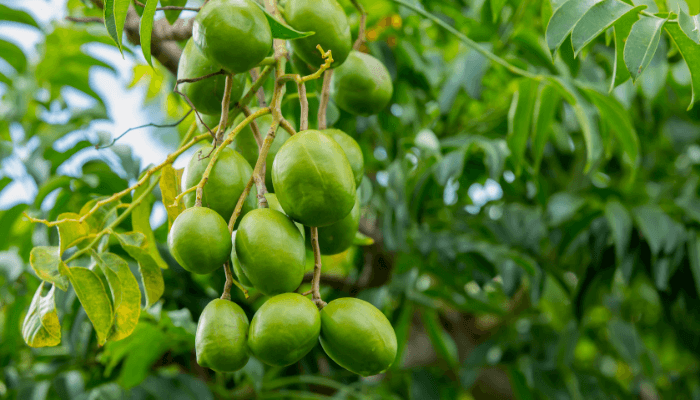
How to grow a hog plum tree?
Given the numerous benefits of this magical medicinal plant, you might want to have one. Hog plum plants can be bought online from Amazon or Flipkart or you can even grow a hog plum tree in your backyard.
Hog plum plants should be planted in autumn or early fall. They grow well when they receive ample amounts of sunlight but can also be planted in partially shady ground. They require a porous and well-drained soil that does not retain water for a long time. They should never be planted in clayey soils.
When you want to grow them for their fruits, they should be planted 8 feet away in rows that should have a distance of 15 feet between them. They can be planted close to each other if the purpose is to prevent soil erosion.
If you are planning to grow a hog plum tree from a sapling, then it is advised to keep their roots completely soaked in water for some hours. This would allow them to absorb moisture that can aid the plant to adjust to its new environment.
Conclusion
Hog plums are no less than a magical plant with infinite benefits and uses. It is native to the Americas but has been naturalized in Asia as well and grows with little to no effort. Its numerous medicinal properties have given it a distinguished place in the world of Ayurveda and Unani medicinal systems. It can be consumed in small quantities without any side effects.
Related reading:

